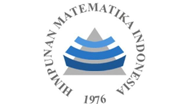Spectral Clustering-Based Segmentation Framework for TikTok Influencer Classification
Abstract
This study presents a data-driven segmentation model for TikTok influencers using Spectral Clustering on 120 verified beauty influencers from FastMoss TikTok Analytics (2024–2025). Five engagement metrics views, likes, comments, shares, and followers were selected via variance thresholding, explaining 92.6% of behavioral variance. A similarity graph with a Radial Basis Function (RBF) kernel (σ = 0.5) and k = 3 clusters yielded a Silhouette Score of 0.9473, indicating highly cohesive and well-separated clusters. Compared to K-Means and Hierarchical Clustering, Spectral Clustering achieved 7.8% higher cohesion, capturing complex, nonlinear engagement patterns. Principal Component Analysis (PCA) confirmed clear distinctions among Micro–Mid, Macro, and Mega influencers. Results show that influencer impact depends more on interaction dynamics than follower count, offering a graph-based approach to optimize brand strategies effectively.
Keywords
Full Text:
PDFReferences
DataReportal, “We Are Social & Meltwater,” 2024. [Online]. Available: https://datareportal.com/reports/digital-2024-indonesia. [Accessed: 15-Aug-2025].
Katadata Insight Center, “Katadata.co.id,” Dec. 2023. [Online]. Available: https://databoks.katadata.co.id/. [Accessed: 15-Aug-2025].
FastMoss, “FastMoss.com,” 2025. [Online]. Available: https://fastmoss.com/. [Accessed: 7-Sep-2025].
A. Rahman, “Data collection, wrangling, and pre-processing for AI assurance,” in Data Collection and Pre-Processing for AI Assurance, 2023, pp. 321–338, https://doi.org/10.1016/B978-0-32-391919-7.00022-6.
A. Yusuf and H. Tjandrasa, “Prediksi nilai dengan metode Spectral Clustering dan Clusterwise Regression,” Jurnal SimanteC, vol. 4, pp. 1–8, 2020.
T. Zhao and H. C. Y. Zhao, “DSEAGC: Dual-spectral embedding for attributed graph clustering,” Internet of Things, vol. 332, p. 101651, 2025, https://doi.org/10.1016/j.iot.2025.101651.
A. Li et al., “Deep spectral clustering network for incomplete multi-view clustering,” Engineering Applications of Artificial Intelligence, vol. 148, p. 110387, 2025, https://doi.org/10.1016/j.engappai.2025.110387.
R. Ananda, M. I. A. Latif, A. L. H., and P. S. R. R., “Analisis harga rumah di daerah Jakarta Selatan dengan menggunakan algoritma Spectral Clustering,” Jurnal Ilmu Komputer Revolusioner, vol. 8, pp. 65–72, Oct. 2024.
A. Y. Ng, M. I. Jordan, and Y. Weiss, “On spectral clustering: Analysis and an algorithm,” Advances in Neural Information Processing Systems (NIPS), vol. 14, pp. 849–856, 2022.
S. Wulandari, “Clustering Microarray Adenoma menggunakan Spectral Clustering dengan algoritma Partitioning Around Medoid (PAM),” Prosiding Seminar Nasional Sains, vol. 4, pp. 345–351, 2020.
A. Bose and M. Das, “Enhancing model explainability through S-GuISE: A spectral clustering-guided input sampling scheme for explanation,” Neurocomputing, vol. 650, p. 130750, 2025, https://doi.org/10.1016/j.neucom.2025.130750.
J. Huang et al., “A hybrid framework for assessing regional inertia estimation in bulk power systems using COI-driven spectral clustering,” International Journal of Electrical Power and Energy Systems, vol. 169, p. 110457, 2025, https://doi.org/10.1016/j.ijepes.2025.110457.
X. Chen et al., “A novel multi-means joint learning framework based on fuzzy clustering and self-constrained spectral clustering for superpixel image segmentation,” Computers and Electrical Engineering, vol. 125, p. 109872, 2025, https://doi.org/10.1016/j.compeleceng.2025.109872.
J. Zhang et al., “ClusterRiceNet: A novel rice seed variety classification network based on hyperspectral imaging and spectral band clustering,” Knowledge-Based Systems, vol. 305, p. 112890, 2025, https://doi.org/10.1016/j.knosys.2025.112890.
D. B. Lodianto, “Spectral Graph Theory for Community Detection in Social Networks,” Institut Teknologi Bandung, 2024.
J. Wang and A. Robles-Kelly, “Spectral contrastive clustering,” Pattern Recognition, vol. 166, p. 111671, 2025, https://doi.org/10.1016/j.patcog.2025.111671.
Z. Zhang, J. Xu, W. Zhao, J. Xie, and F. N. Xiang, “Spectral ensemble clustering from graph reconstruction with auto-weighted cluster,” Pattern Recognition Letters, vol. 196, pp. 243–294, 2025, https://doi.org/10.1016/j.patrec.2025.03.015.
L. Yang, X. Wang, and G. W. F. Alshami, “SCDFL: A spectral clustering-based framework for accelerating convergence in decentralized federated learning,” Computer Networks, vol. 271, p. 111615, 2025, https://doi.org/10.1016/j.comnet.2025.111615.
X. Zhao and Q. C. B. Yan, “Individual fair fuzzy C-means clustering via density-adaptive spectral regularization,” Neurocomputing, vol. 651, p. 130794, 2025, https://doi.org/10.1016/j.neucom.2025.130794.
S. Zhang, C.-G. Li, X. Qian, R. Xiao, and J. G. Wang, “Neural normalized cut: A differential and generalizable approach for spectral clustering,” Pattern Recognition, vol. 164, p. 111545, 2025, https://doi.org/10.1016/j.patcog.2025.111545.
R. Feng et al., “Hypergraph dismantling with spectral clustering,” Communications in Nonlinear Science and Numerical Simulation, vol. 150, p. 108975, 2025, https://doi.org/10.1016/j.cnsns.2025.108975.
A. G. J. T., S. T.-S. H., and A. M. A. Siddique, “Big data analytics in food industry: A state-of-the-art literature review,” npj Science of Food, vol. 9, 2025, https://doi.org/10.1038/s41538-025-00394-y.
U. von Luxburg, “A Tutorial on Spectral Clustering,” Statistics and Computing, vol. 17, no. 4, pp. 395–416, 2020.
A. Y. Ng, M. I. Jordan, and Y. Weiss, “On Spectral Clustering: Analysis and an Algorithm,” Advances in Neural Information Processing Systems (NIPS), vol. 14, pp. 849–856, 2020.
J. Shi and J. Malik, “Normalized Cuts and Image Segmentation,” IEEE Transactions on Pattern Analysis and Machine Intelligence, vol. 22, no. 8, pp. 888–905, 2020.
A. Kumar and R. Kannan, “Clustering with Spectral Norm and the k-Means Algorithm,” Foundations of Computer Science (FOCS), pp. 299–308, 2020.
A. Avrachenkov, M. Bobu, and J. Dreveton, “Higher-Order Spectral Clustering for Geometric Graphs,” Journal of Fourier Analysis and Applications, vol. 27, no. 6, pp. 1–27, 2021, doi: 10.1007/s00041-021-09825-2.
A. Dall’Amico, R. Couillet, and N. Tremblay, “A Unified Framework for Spectral Clustering in Sparse Graphs,” Journal of Machine Learning Research (JMLR), vol. 22, no. 261, pp. 1–55, 2021.
P. Macgregor and H. Sun, “A Tighter Analysis of Spectral Clustering, and Beyond,” in Proceedings of the 39th International Conference on Machine Learning (ICML), Baltimore, MD, USA, 2022, pp. 15083–15106.
A. Cerro, S. Dasmahapatra, A. Day-Hall, L. Moretti, et al., “Spectral Clustering for Jet Physics,” Journal of High Energy Physics (JHEP), vol. 2022, no. 2, pp. 165–187, 2022, doi: 10.1007/JHEP02(2022)165.
H. Chen, H. Ye, and C. Li, “Spectral Clustering Community Detection Algorithm Based on Point-Wise Mutual Information Graph Kernel,” Entropy, vol. 25, no. 12, pp. 1617–1634, 2023, doi: 10.3390/e25121617.
DOI: http://dx.doi.org/10.30829/zero.v9i2.26396
Refbacks
- There are currently no refbacks.

This work is licensed under a Creative Commons Attribution-ShareAlike 4.0 International License.
Publisher : Department of Mathematics Faculty of Science and Technology Universitas Islam Negeri Sumatera Utara Medan | |
✉️ Email: zero_journal@uinsu.ac.id 📱 WhatsApp:085270009767 (Admin Official) | |
 |  |  |  |  |



